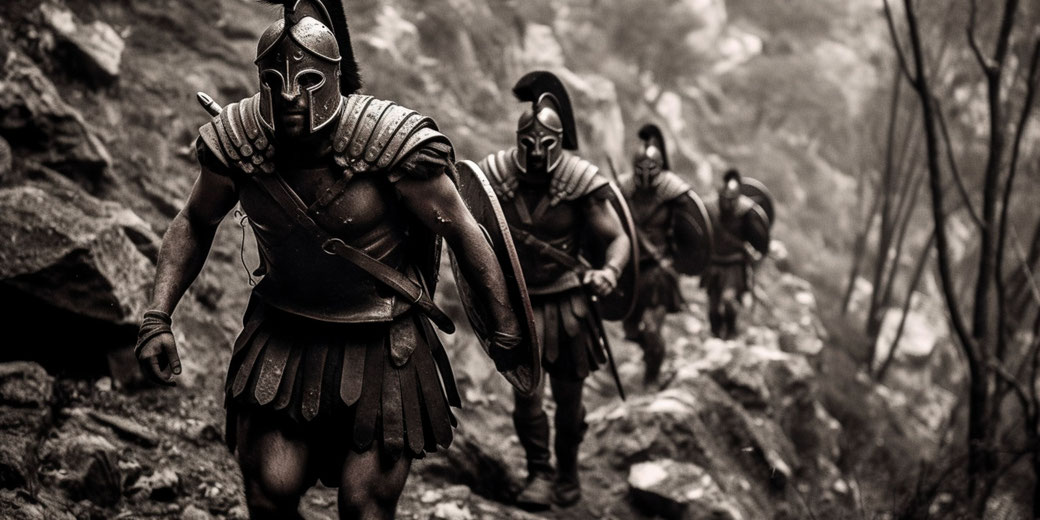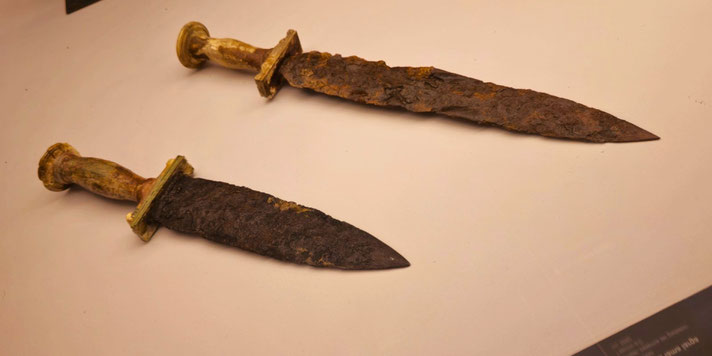Secret assassins of ancient Sparta: The Krypteia and their murderous missions

Silent footsteps moved through the darkness, and by morning, a helot lay dead without any witnesses. This event hints at the deadly effectiveness of the Krypteia, Sparta’s covert strike force, and it is one of the most mysterious groups of the ancient world.
Scholars continue to debate whether membership in this group was a rite of passage or whether it was a state-approved assassination squad.
But, what do we actually know about the shadowy Kryptaia?
What was the Krypteia?
The word Krypteia comes from the Greek word kryptos, which means hidden or secret.
As far as we know, members of the Krypteia worked under the cover of darkness, carrying only a dagger and basic supplies when they performed their missions.
Such missions mainly targeted the Helots, an oppressed class of farm labourers who provided the foundation of the Spartan economy and posed a constant danger to Spartan security.
Most of what we know about the Krypteia comes from Plutarch. He wrote about them in the first and second centuries CE.

Who were the Helots?
At the top of Spartan society were the Spartiates, the full citizens who had finished the agoge and formed the military.
Below them were the Perioeci, who were free non-citizens with no political rights.
And at the bottom were the Helots, a group consisting mainly of Messenians who had been conquered by the Spartans in the Messenian Wars during the eighth century BCE.
The Helots were tied to the land and did the farm work that kept the Spartan economy going, which let the Spartiates focus on military training and government.
Yet, they posed a constant risk of rebellion because they outnumbered them by about seven to one.
How the Krypteia was formed
Some historians trace the origins of this secret group to the Dorian invasion of the Peloponnesian Peninsula, which led to the founding of the city-state of Sparta.
The Krypteia may have first formed as a guerrilla force whose mission was to stop resistance among various conquered local people groups.
Over time, this force became a more established part of the Spartan state.
However, others suggest that the Krypteia developed later, arguing that it was onlly formalised during the sixth century BCE, when Sparta was strengthening its power and expanding its territory.
Regardless, it changed to meet the shifting needs and challenges faced by Sparta.
Its main focus remained internal security, where it worked to stop possible Helot revolts, and in certain periods, historians think that its role grew to include scouting and spying during times of war.
For example, during the Greco-Persian Wars, members of the Krypteia gathered intelligence.
Their reports provided useful information that helped secure key Spartan victories such as the Battle of Plataea in 479 BCE.
Similarly, during the Peloponnesian War against Athens, the Krypteia played an important role in spying and counter-spying operations.
Recruitment and training for the Krypteia
The recruitment and training of members are thought to be a part of the Spartan education system.
This strict programme began at the age of seven and was required for all male Spartiates.
The agoge taught discipline, obedience, and fighting skills, and also included a series of tests and rites that were thought to be the change from boyhood to manhood.
Spartan leaders would choose Krypteia candidates from among the young men who had already gone through years of tough physical and mental training.
As far as historians can tell, the selection for the Krypteia was a special honour reserved for those who had outstanding skills in leadership, stealth, and fighting.
Once leaders chose the candidates, the young men underwent extra specialised training, the details of which Sparta kept as a closely guarded secret.
Historians are still not sure of every detail of it. In general, it probably included advanced lessons in survival skills and spying techniques.
What missions did the Krypteia undertake?
One main role of the Krypteia was to find and kill possible Helot leaders or troublemakers who could incite rebellion.
They carried out this task through secret missions in which young members would enter Helot communities at night in order to carry out killings.
Although the exact details of their operations remain unclear, historical writings offer some insights into the way these operatives worked.
In particular, Krypteia members usually worked alone or in small groups. They carried only a dagger and some basic supplies as they entered target areas under the cover of darkness, where they hoped to surprise their targets.
The Krypteia also used fear as a weapon. Their very existence acted as a warning that made the Helots afraid and, it was hoped, would cause them to think twice about rebelling.
However, in today’s view, the targeted killings and threats carried out by the Krypteia were examples of government-approved violence against a marginalised group.
Needless to say, the Spartans justified these actions as 'needed for the common good'.
Still, these actions create a moral problem that makes us question justice, human rights, and the fair use of power in ancient Sparta.
The end of the Krypteia
By the late 4th century BCE, Sparta had suffered a series of military losses and political failures that weakened its hold on those lands and hurt its reputation among the Greek city-states.
The most important of these events was the Battle of Leuctra in 371 BCE, when the Theban general Epaminondas defeated the Spartans and ended their military power.
In fact, once the Theban armies reached the city of Sparta, they freed all of the Messenian Helots.
After the loss of Messenia and the release of the Helots, Sparta’s social and economic structure collapsed.
At that point, the Spartiate class had become smaller because of years of war. Only around 1,000 adult men were left.
As a result, the Krypteia’s role in controlling people became redundant.
Although no clear record shows when or how the Krypteia was officially ended, it probably faded away over time.
Its missions were reduced and its members moved into other roles as Sparta struggled to adjust to its new situation.
What do you need help with?
Download ready-to-use digital learning resources
Copyright © History Skills 2014-2025.
Contact via email
With the exception of links to external sites, some historical sources and extracts from specific publications, all content on this website is copyrighted by History Skills. This content may not be copied, republished or redistributed without written permission from the website creator. Please use the Contact page to obtain relevant permission.





